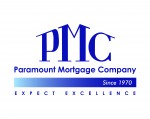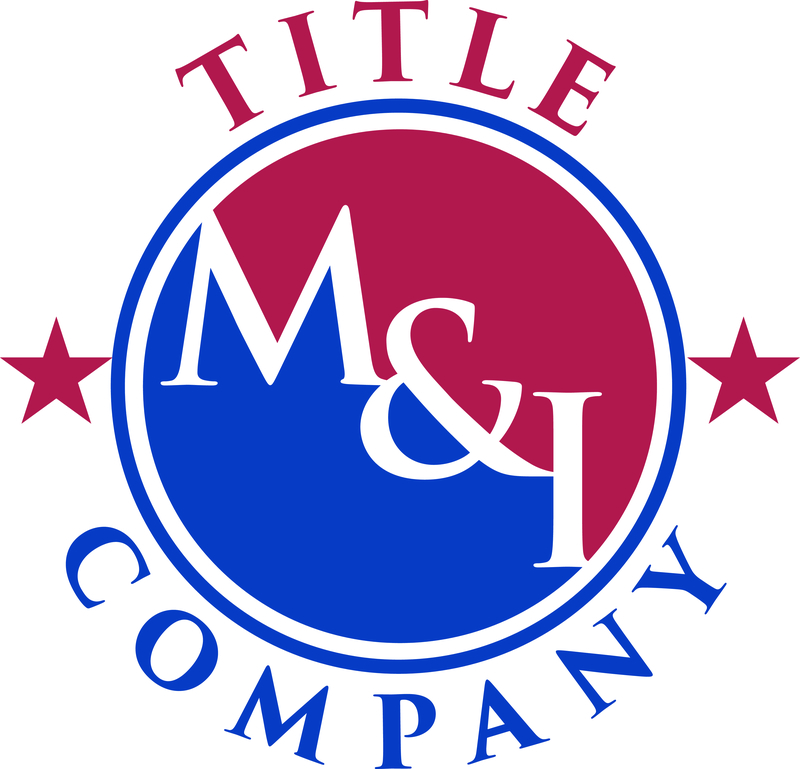By News Desk, on December 9th, 2010 Settlement Provides $2 Million to African-American Borrowers Who Paid Higher Interest Rates
PrimeLending, a national mortgage lender with 168 offices in 32 states at the end of 2009, has agreed to pay $2 million to resolve allegations that it engaged in a pattern or practice of discrimination against African-American borrowers between 2006 and 2009. Continue reading “Justice Department Reaches Settlement with Prime Lending to Resolve Allegations of Lending Discrimination“
By Dennis Norman, on November 12th, 2010 
Speaking at the National Consumer Law Center’s Consumer Rights Litigation Conference in Boston, Federal Reserve Governor Sarah Bloom Raskin delivered some sobering news about the Fed Reserve’s expectations for the housing market.
Raskin discussed how foreclosures on residential properties soared from about one million in 2006, the “peak of the boom”, to 2.8 million last year. There were 1.2 million foreclosure filings in just the first half of 2010 and, right now, nearly five million loans are somewhere in the foreclosure process or are 90 days or more past due.
Raskin said “our projections remain very grim for the foreseeable future: All told, we expect about two and one-quarter million foreclosure filings this year and again next year, and about two million more in 2012. While these numbers are down from their peak in 2009, they remain extremely high by historical standards and represent a trauma in the lives of millions of people affected.”
By Dennis Norman, on November 5th, 2010  Dennis Norman At the National Association of REALTORS® Conference and Expo in New Orleans today, “a slow, steady recovery” was predicted for the housing market despite ongoing challenges.
Lawrence Yun, National Association of Realtors® chief economist, said that he expects “continuing improvement of underlying fundamentals of the current market in coming years.” Continue reading “Slow, Steady Housing Recovery Expected Ahead“
By Dennis Norman, on September 3rd, 2010  Dennis Norman Reverse mortgages have become increasingly popular over the past few years with seniors that find themselves with a large amount of equity in their home, but short on cash, or struggling to pay for the upkeep of the home, property taxes, insurance or other living expenses. A reverse mortgage allows people in that situation to pull the equity from their home in a lump sum, monthly payments or just as they need it. Continue reading “New Rule Proposed to Protect Seniors Obtaining Reverse Mortgages“
By Dennis Norman, on August 27th, 2010  Dennis Norman Home mortgages are often sold or assigned, sometimes even right after the origination of the loan and, as a result, borrowers find themselves not knowing who their current lender is or how to contact their lender. This issue was addressed back in May 2009, as part of the Helping Families Save Their Homes Act, lenders that purchased home mortgages were required to provide disclosures in writing to the borrower within 30 days.
Continue reading “New Rules for Mortgage Transfers“
By Dennis Norman, on August 25th, 2010  Dennis Norman Over the past couple of years lawsuits have been filed against several lenders over “yield spread premiums” that were paid by the lenders to mortgage brokers originating loans on their behalf. These suits brought a lot of attention to a common practice in the mortgage industry which was to compensate the companies (or loan officers) originating loans based upon the rate and points charged to the borrower. There have been numerous debates on the topic and I’m staying out of it, however, last week the Federal Reserve announced new rules that will go in effect on April 1, 2011 that will end this practice. Continue reading “New Rules Announced to Protect Mortgage Borrowers“
By Dennis Norman, on July 5th, 2010  Dennis Norman While there has been much discussion about the causes and effects of the Housing Boom as well as the Bust (including by yours truly in prior posts) I don’t think we need to refrain from continuing to examine this part of history that is affecting millions of people across the country. Perhaps we can learn some lessons from this that will help us avoid another such collapse of the housing market in the future.
My topic today actually has a silver lining of sorts. The topic is debt and how so many homeowners across the country leveraged themselves into a mountain of debt during the housing boom only to later have that mountain collapse on them. My attention was drawn to this subject by a presentation done by Karen Dynan of the Brookings Institution entitled “Household Leveraging and Deleveraging“.
American’s Debt Grew At a Much Faster Pace Than Income
As you can see from the chart below the percentage of American’s disposable personal income that is needed to pay debt payments on mortgage and consumer debt peaked in the mid to late ’80s just over the 12 percent range but then dropped back down to just below 11 percent by the early 90’s. By the height of the real estate boom this percentage had grown significantly and peaked at just under 14 percent in 2007. Clearly the cost of home ownership during the boom was increasing at a faster pace than homeowners income.
 Chart by Information St. Louis, Inc. - Data Source Board of Governors of the Federal Reserve Dynans’ report attributes the rise in debt to having probably been “the combination of increasing house prices and financial innovation.” I think “financial innovation” is a nice way to describe sub-prime, interest only and other such creative ways to finance homes that became prevalent during the boom.
As the chart below depicts, consumers mortgage debt grew dramatically during the housing boom even though “other debt” remained fairly constant.
 Source: Household Leveraging and Deleveraging - Karen Dynan “Everyone” Was Borrowing – Not Just Sub-Prime Borrowers
Contrary to what is sometimes portrayed, it wasn’t just sub-prime borrowers that were racking up debt during the housing boom. The chart below shows a fairly consistent increase in household debt across several demographics.
 Source: Household Leveraging and Deleveraging - Karen Dynan Obviously this rather rapid and intense increase in household debt, particularly mortgage debt, is a major factor behind the record number of mortgage delinquencies and foreclosures we are currently seeing. Rising home prices (at astonishing rates in some markets) during the boom forced many homeowners to take on more mortgage debt than they should. Many even admit buying homes with initial “teaser” interest rates realizing they would not be able to afford the payment in two years when the teaser is gone, but simply planned to sell the home (at a profit) beforehand and move on. This, like musical chairs, works until the music stops as it did in 2007.
The Importance of Defaults
If you have defaulted on your mortgage or lost a home in foreclosure, you are helping out our economy! Well, sort of. According to Dynan’s report, the record rates of charge-offs by lenders of mortgages as a result of defaults and foreclosures that have occurred in the past year has resulted in mortgage debt in 2009 declining 2 percent rather than staying flat.
 Source: Household Leveraging and Deleveraging - Karen Dynan Now for the Silver Lining-
I promised you a silver lining and here it is. American’s now have less household debt! Beginning with the 2nd quarter of 2008 consumers home mortgage debt, after increasing over a trillion dollars just two years before, actually decreased and has continued decreasing every quarter since. Consumer started decreasing as well in the 4th quarter of 2008 but has grown slightly again in the 1st quarter of this year.
 Source: Household Leveraging and Deleveraging - Karen Dynan In addition, as the debt-service chart at the beginning of this post shows, the portion of income that is necessary to pay debts for the American consumer has fallen over 1 percent from it’s peak and is still headed downward.
Is This Self-Control Or Is There No Choice?
Ah, critics could argue that the consumer has not really learned anything from the housing bust and the only reason debt has dropped is that banks and other lenders aren’t lending. Well, it is certainly true that lending standards have tightened significantly and bankers are acting like, uh, well, bankers again (the pre-boom ones) as shown by the chart below. However, Dynan’s report indicates that 20 percent of senior loan officers reported in May 2010 that demand for consumer loans had fallen relative to 3 months earlier. Probably better proof that consumers are exercising self-control is the MBA mortgage application survey which, in recent weeks, have shown a decrease in mortgage applications from both home-buyers as well as home owners seeking to refinance.
 Source: Household Leveraging and Deleveraging - Karen Dynan What Does The Future Hold In Store?
Karen Dynan suggests that we are going to see consumers continue the trend of reducing debt. She bases this on the high ratio of average household debt to assets which, as the chart below illustrates, peaked in the past year at a level that was 50 percent higher than in 2000.
 Source: Household Leveraging and Deveraging - Karen Dynan Dynans’ report goes on to say the following about the future:
- Mortgage charge-offs are likely to remain high
- Foreclosures will be on the rise again after being delayed by HAMP and other factors
- Even when lender’s ease up, new borrowing is going to be dampened due to borrowers lacking home equity
By Robert Fishel, on April 28th, 2010 
Realtors, home buyers and sellers are rushing to complete sales agreements before the tax credit for home purchases expires this week; home buyers must have a deal by April 30 and close by June 30 to qualify for a tax break up to $8,000 for first-time home buyers and $6,500 for those moving to a different residence. The Treasury Department and the real estate industry have termed the program a success, helping people buy homes. However, many tax experts say it has been singularly cost-ineffective: most of the $12.6 billion in credits through end of February was collected by people who would have bought homes anyway or who in some cases were not even eligible…
The unkowns are:
With the end of the Federal Reserve’s mortgage backed security purchase program March 31st and the tax credit set to expire on April 30th, what kind of housing market will we be facing in the second half of 2010? Are interest rates going to rise? What happens after the tax credit goes away?
Stay tuned.
St. Louis Mortgage Interest Rates – April 28, 2010 *
- 30-year fixed-rate mortgage 5.125% no points
- 15-year fixed-rate mortgage 4.375% no points
- 5/1 adjustable rate mortgage 3.625% no points
- FHA/VA 30-year fixed rate mortgage 5.25%
- Jumbo 5/1 ARM 4.125% no points
- Jumbo 15 year fixed rate mortgage 4.625%
For more information or if you have questions on mortgage rates in St. Louis you may contact me by phone at my direct line, (314) 372-4319, email at rfishel@paramountmortgage.com or you can visit our company website at http://www.paramountmortgage.com.
*Note- The above rates are based upon a typical sale price of $187,500 with a 20% percent down payment leaving a loan amount of $150,000 to a borrower with a 720 credit score for a loan with no discount points charged. Rates and terms will vary depending upon loan amount, home value, credit and income of borrower.
This information is provided by this author and this site for informative purposes only and is not warranted or guarteed in any way.
By Dennis Norman, on April 6th, 2010
 - Dennis Norman
At the Federal Open Market Committee meeting on March 16th it was suggested that “economic activity expanded at a moderate pace in early 2010″. Unfortunately, when it came to the housing market, the news was not as good and it was noted that “housing activity remained flat and the nonresidential construction section weakened further.”
The staff went on to say that activity in the housing sector appears to “have flattened out in recent months” and that “sales of both new and existing homes have turned down, while starts of single-family homes were about unchanged despite the substantial reduction in inventories of unsold new homes.” The feeling was that some of the recent weakness in home sales may have been due to buyers that rushed to buy in anticipation of the first-time homebuyer tax credit that was originally expected to expire in November, 2009.
Other concerns about the housing market that were expressed by participants in the meeting included the concern that activity appeared to be leveling off in most regions despite various forms of government support, and that the commercial and industrial real estate markets “continue to weaken”. The fact that “housing sales and starts had flattened out at depressed levels” suggests that the previous improvements in the housing market may have largely been a result of the homebuyer tax credit “rather than a fundamental strenthening of housing activity.“
On another negative note for the housing markets, the meeting participants indicated that “the pace of foreclosures was likely to remain quite high; indeed, recent data on the incidence of seriously delinquent mortgages pointed to the possibility that the foreclosure rate could move higher over coming quarters.” Adding; “the prospect of further additions to the already very large inventory of vacant homes posed downside risks to home prices.” (hmm…sounds familiar, what real estate blogger has been talking about this for a while and expressing concern? oh yeah, me :)
The committee also confirmed, as I have discussed was coming in other posts, that the Fed was going to complete their purchase of the $1.25 trillion worth of mortgage-backed securities by the end of March that they committed to in an effort to add liquidity to the mortgage market and would discontinue purchasing the securities after that. Thus far this has not had much effect on interest rates but I think it will take a month or so to see where things shake out.
So, in a nutshell, the Fed doesn’t think the housing market is out of the woods yet; the government stimulus may have done nothing more than creaate a temporary “false market” (I’ve talked about this point here before too) and that the housing sector may continue to be a drag on the economy for a while.
By Dennis Norman, on March 22nd, 2010
 Dennis Norman The Federal Reserve announced it will stop purchasing mortgage-backed securities by the end of March.
In November, 2008, the Federal Reserve announced, in an effort to help the housing market, it would purchase mortgage-backed securities. Then, in March, 2009, the Fed increased the total amount of money they would invest in such securities to $1.25 trillion and estimated that they would complete those purchases by the end of first quarter 2010.
The Fed’s action I think certainly added some liquidity and confidence to the ailing housing market and now, that the time has come for them to pull out of the market, the question is what effect it will have on interest rates is uncertain. Some industry analysts are cautioning that after the Fed pullout the private investor sector will want a higher return thereby forcing mortgage interest rates upward.
Last week the Federal Reserve announced that they will complete the purchases of mortgage-backed securities by the end of this month, thereby taking the Fed out of the market. In their announcement they said “economic activity has continued to strengthen and that the labor market is stabilizing” but cautioned that the pace of economic recovery “is likely to be moderate for a time.”
By this time next month we will get an idea of what effect the Fed’s action will have on interest rates. I think it is safe to say we are going to see an increase in mortgage interest rates although I would predict that the increase will be slight, at least initially. The interest rate for a 30-year fixed-rate mortgage has been hovering around 5 percent for a while now, sometimes bouncing above or below that mark. My guess is we will see this rate hover more in the 5.25 – 5.50 percent range soon.
By Robert Fishel, on March 10th, 2010 
Last Friday’s suprisingly strong payroll figures likely reinforced for many investors that the next time the Fed makes a change to their monetary policy strategy-it will likely to raise short-term interest rates. The actual date of such an event may be months away-but an increasing number of “stronger than expected” economic reports are making it difficult for mortgage interest rates to move lower. A growing number of business economists believe the U.S. central bank’s policy’s are too stimulative and expect the Federal Reserve to raise benchmark interest rates within six months.
The Fed has said continued high rates of unemployment and low inflation warrant holding rates exceptionally low for an extended period. Still, reports show the economy is recovering gradually, and some policy makers believe the Fed should begin to prepare markets for the beginning of the process of tightening financial conditions.
St. Louis Mortgage Rates – March 10 , 2010 *
- 30-year fixed-rate mortgage 5.00% no points
- 15-year fixed-rate mortgage 4.25% no points
- 5/1 adjustable rate mortgage 3.75% no points
- 3/1 adjustable rate mortgage 3.625% no points
- FHA/VA 30-year fixed rate mortgage 5.250%
- Jumbo 5/1 ARM 4.125% no points
For more information or if you have questions on mortgage rates in St. Louis you may contact me by phone at my direct line, (314) 372-4319, email at rfishel@paramountmortgage.com or you can visit our company website at http://www.paramountmortgage.com.
*Note- The above rates are based upon a typical sale price of $187,500 with a 20% percent down payment leaving a loan amount of $150,000 to a borrower with a 720 credit score for a loan with no discount points charged. Rates and terms will vary depending upon loan amount, home value, credit and income of borrower.
This information is provided by this author and this site for informative purposes only and is not warranted or guarteed in any way.
By Robert Fishel, on February 24th, 2010 
When considering historically low interest rates, competitive home values along with the $8,000 First-Time Homebuyer and $6,500 Repeat Homebuyer Tax Credits, potential homebuyers still have a great opportunity.
THE TIME TO ACT IS NOW.
The Federal Reserve indicates it will stop buying mortgage-backed securities toward the end of the first quarter. Most mortgage experts believe that mortgage interest rates will rise when mortgages go off “Fed support” as private investors require higher rates to compensate for the risk.
The deadline for the First Time/Repeat Homebuyer Tax Credits is an executed contract by April 30, 2010 with a closing no later than
June 30, 2010.
Contact your lender to review your options and prospects.
St. Louis Mortgage Rates – February 24, 2009 *
- 30-year fixed-rate mortgage 5.00% no points
- 15-year fixed-rate mortgage 4.25% no points
- 5/1 adjustable rate mortgage 3.75% no points
- 3/1 adjustable rate mortgage 3.750% no points
- FHA/VA 30-year fixed rate mortgage 5.250%
- Jumbo 5/1 ARM 4.125% no points
For more information or if you have questions on mortgage rates in St. Louis you may contact me by phone at my direct line, (314) 372-4319, email at rfishel@paramountmortgage.com or you can visit our company website at http://www.paramountmortgage.com.
*Note- The above rates are based upon a typical sale price of $187,500 with a 20% percent down payment leaving a loan amount of $150,000 to a borrower with a 720 credit score for a loan with no discount points charged. Rates and terms will vary depending upon loan amount, home value, credit and income of borrower.
This information is provided by this author and this site for informative purposes only and is not warranted or guarteed in any way.
By Dennis Norman, on September 16th, 2009
 - Dennis Norman
According to a study conducted by First American CoreLogicentitled “How the U.S. Consumer Has Benefited from Mortgage Finance Programs in 2009”, projections are there will be $2.3 billion in mortgages refinanced as a result of the Fed’s “Making Home Affordable” plan. According to the study, the median individual monthly savings was $120.
“ The quantitative easing policies of the Federal Reserve and refinance activity made possible by the Home Affordable Refinance Program (HARP) have allowed more than 2 million consumers to reduce their monthly mortgage debt obligations and put more money in their pockets,” said Mark Fleming PhD, and chief economist for First American Core Logic. “This permanent increase in monthly income is likely to, in part, be used to increase consumption and help to drive growth as the economy rebounds. Additionally, these refinanced loans are likely to be more sustainably affordable debt obligations. The combination of lower payments and fixed-rate terms should also reduce the risk of future foreclosure.” The quantitative easing policies of the Federal Reserve and refinance activity made possible by the Home Affordable Refinance Program (HARP) have allowed more than 2 million consumers to reduce their monthly mortgage debt obligations and put more money in their pockets,” said Mark Fleming PhD, and chief economist for First American Core Logic. “This permanent increase in monthly income is likely to, in part, be used to increase consumption and help to drive growth as the economy rebounds. Additionally, these refinanced loans are likely to be more sustainably affordable debt obligations. The combination of lower payments and fixed-rate terms should also reduce the risk of future foreclosure.”
By Dennis Norman, on August 3rd, 2009  Dennis Norman Late last week the Federal Reserve Board proposed significant changes to Regulation Z (Truth in Lending) intended to improve the disclosures consumers receive in connection with home mortgages and home equity lines of credit.
These changes are just proposed at this point and are being offered for public comment for 120 days at which time the Fed Reserve will review comments and decide whether or not to put the changes into effect.
 Ben S. Bernanke “Consumers need the proper tools to determine whether a particular mortgage loan is appropriate for their circumstances,” said Federal Reserve Chairman Ben S. Bernanke. “It is often said that a home is a family’s most important asset, and it is the Federal Reserves’ responsibility to see that borrowers receive the information they need to protect that asset.”
The proposed changes include: Continue reading “Fed Reserve proposes significant changes to provide more disclosure and protection to borrowers on mortgages“
By Dennis Norman, on August 1st, 2009
 Dennis Norman By: Dennis Norman
Buying a home should be a dream come true not a nightmare of worry and stress. A new Federal Reserve Board publication, “5 Tips for Shopping for a Mortgage,” will help consumers avoid potential pitfalls and make well-informed decisions when choosing a home loan.
Financing the purchase of a home is one of the most complex financial decisions that consumers make. The Federal Reserve’s latest “5 tips” guide is designed to help home buyers find the mortgage that is best for them. The complete guide is available here however a summary of the tips are below:
- Know what you can afford.
- Review your monthly income and spending to estimate what you can afford to pay for a home, including the mortgage, property taxes, insurance, and monthly maintenance and utilities.
- Shop around-compare loans from lenders and brokers.
- Shopping takes time and energy, but not shopping around can cost you thousands of dollars. You can get a mortgage loan from mortgage lenders or mortgage brokers.
- Understand loan prices and fees.
- Many consumers accept the first loan offered and don’t realize that they may be able to get a better loan.
- Know the risks and benefits of loan options.
- Mortgages have many features — some have fixed interest rates and some have adjustable rates; some have payment adjustments; on some you pay only the interest on the loan for a while and then you pad down the principal (the loan amount).
- Get advice from trusted sources
- A mortgage loan is one of the most complex, most expensive financial commitments you will ever assume–it’s okay to ask for help. Talk with a trusted housing counselor or a real estate attorney that you hire to review your documents before you sign them.
By Dennis Norman, on July 16th, 2009  By: Dennis Norman By: Dennis Norman
Recently the The Office of the Comptroller of the Currency issued a Consumer Advisory. The Advisory contains consumer tips for avoiding mortgage modification scams and foreclosure rescue scams.
The advisory states; “Scams that promise to “rescue” you from foreclosure are popping up at an alarming rate nationwide, and you need to protect yourself and your home. If you’re falling behind on your mortgage, others may know it too – including con artists and scam artists. They know that people in this situations are vulnerable and often desperate.”
The OCC suggests that before you do business with someone offering to negotiate a loan modification for you or to stop or delay foreclosure for a fee that you carefully check his or her credentials, reputations, and experience. Watch out for warning signs of a scam, and always maintain personal contact with your lender and mortgage servicer. Continue reading “Avoid mortgage modification and foreclosure rescue scams“
|
Recent Articles
|


















